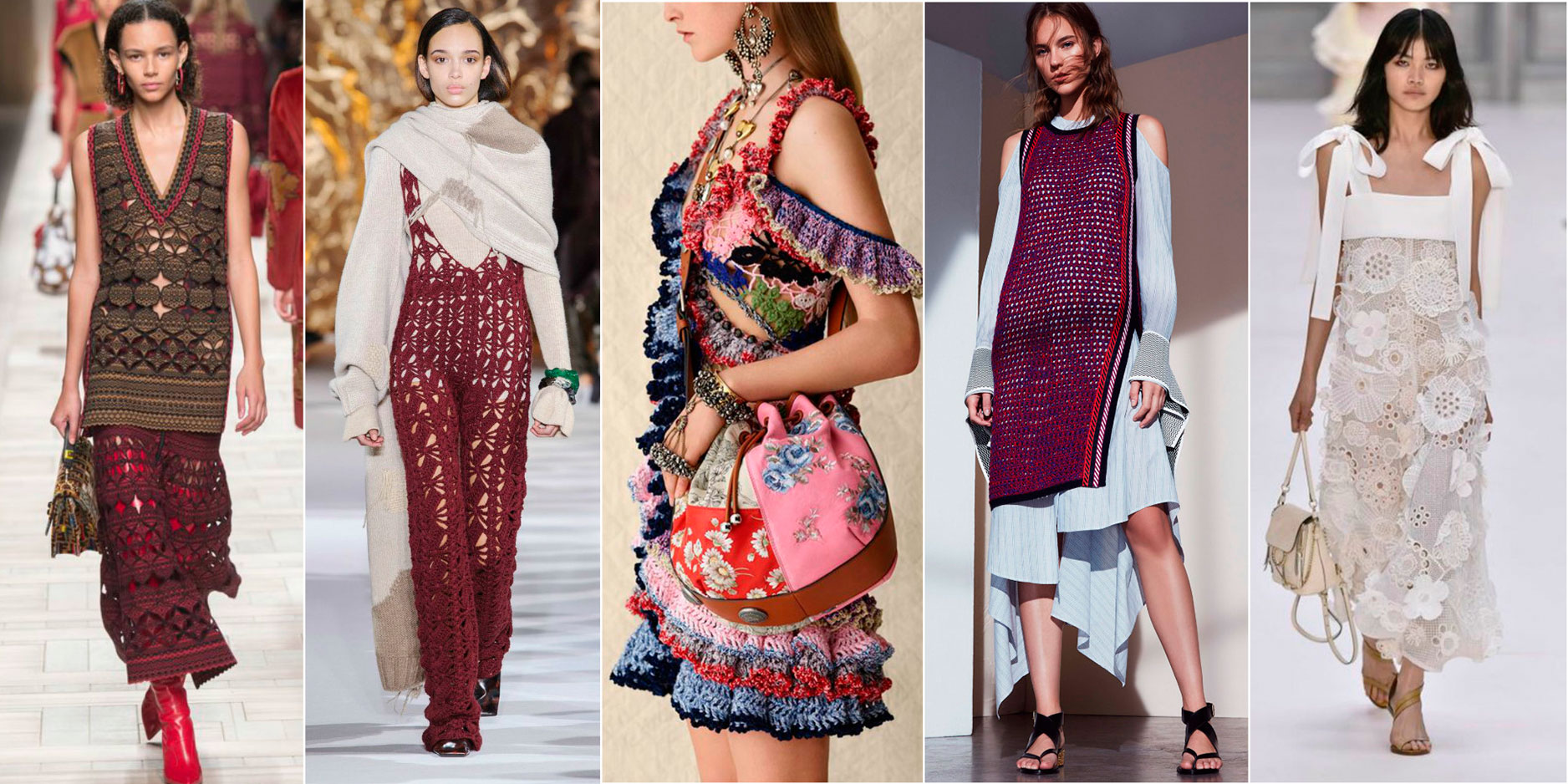Crochet lace
Blue azure... Green trees... Coast of the island of Mallorca... Quiet southern evening... A slight sound of the sea breeze comes from afar, and a cool breeze cools the heat-exhausted skin...
An idyllic, harmonious landscape...
It is these associations that arise at the sight of romantic flowing clothes with crochet lace – trend this summer. And «trick» it is not in the fabrics used, not in styles or colors, but in small lace inserts, reminiscent of grandmother's needlework from afar.

Crochet fashion: how did it all start?
In the era of the popularity of social events, balls and poetic evenings, and this is no less than the end of the 19th century, exquisite fabrics and decor were used to sew even everyday dresses, which turned a woman into a flower, graceful and mysterious. Dresses, blouses, umbrellas and other things made of Irish crochet lace were especially popular at that time. Although it appeared much earlier – back in the 15th century, and it was originally woven from cotton threads twisted in plaits, only nuns at monasteries small thin hooks.
The main motifs of lace were flowers, leaves, grapes, shamrocks, insects. And the lace itself turned out to be voluminous. To create one pattern, pattern or canvas, separate parts of the motif (leaves, flowers, rosettes) were knitted separately, which were interconnected by a mesh or inserted into the lace fabric of collars, cuffs, bodices, dresses, coats, underwear, etc.

Due to the fact that lace was woven only by hand and it took a lot of time to create it, finished products from "crochet" cost a lot of money. Therefore, every Irish family began to knit lace motifs, and all family members were involved in the creation of ornaments, each of whom created one thing. Even small sons were involved in this business, and the method of knitting fragments and their patterns were kept as a family secret. When all the lace motifs were ready, the villagers took them to the city and gave them to lacemakers who used knitted leaves, petals, flowers, berries for sewing lace products and sold not only in Ireland itself, but also abroad. Such a business helped many families survive and not die of hunger.

When in 1850 hand knitting was replaced by machine lace, cheaper and more affordable, the production of crochet lace went into decline. But it did not remain in the shadows for long, and at the end of the 19th century, Irish lace again became in demand. they sewed chic dresses with colored lining or color for color, jackets, collars and capes. Not uncommon – cases for umbrellas from the sun and the umbrellas themselves. And sometimes they used crochet lace; in the form of decorative inserts on finished products.
The popularity of "crochet" led to the fact that the technique of knitting this type of lace began to be taught at schools for noble maidens, and then even aristocratic women from different countries of Europe became interested in this type of needlework. But the world popularity of "crochet" was brought by Queen Victoria of Great Britain, and in particular her love for needlework. collections of world couturiers. Of course, this is not the same exquisite work, but still ...

"Crochet" and modernity
Crochet is firmly woven into modern fashion, and this fall, lace will also remain in the epicenter of attention. In addition, it can also break into the men's wardrobe and not only in the form of sweaters or scarves. An image completely assembled from crochet will be an excellent alternative to a knitted total bow and, although it will look in the spirit of the 70s, it will allow ;keep in touch with reality.
But if you are not ready for such a radical change in your style, take a closer look at clothes where "crochet" is used as a decoration or used as a decorative insert on the sleeves and shelves of the product:
